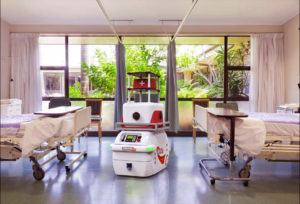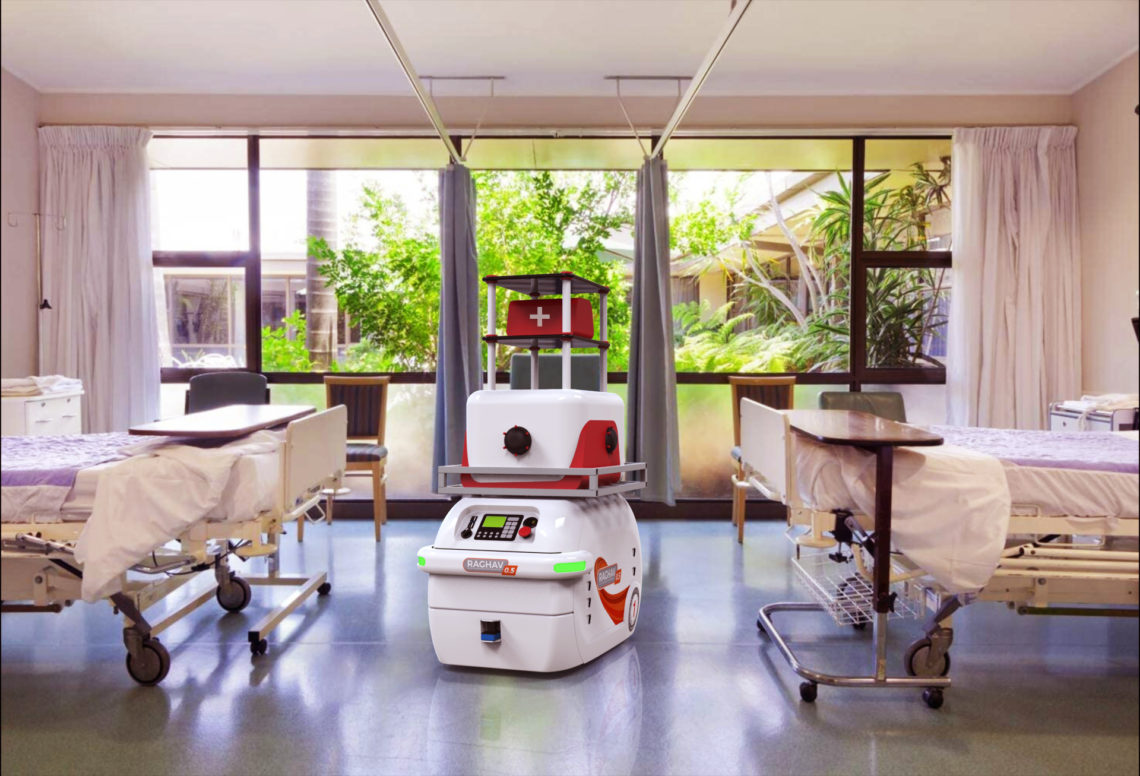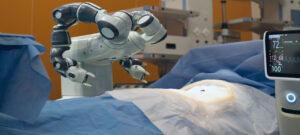Welcome back to another blog in the series Robotics in Healthcare. Previously, we have looked at several new-age applications of robots in delivering healthcare and managing hospitals. Without a doubt, such applications are transforming how patients are treated and providing many benefits to patients, doctors, hospital management, etc. However, with advantages come a few risks and disadvantages too. What are those?
Through this piece, we shall take a look at the benefits we can reap and the risks we must manage as far as the use of robots in healthcare is concerned. Read on!
Reaping the benefits:
Reduced errors
The number of patients dying due to surgical errors has drastically reduced over the past few years, and we have only robotics to thank for saving these numerous lives. Robots like the Da Vinci Surgical System are widely used in hospitals for reducing errors in surgery. At the same time, the Da Vinci Wonderbot allows surgeons to have a magnified 3D vision, thus, giving them enhanced control and making the surgery less invasive. The use of precision robots leads to increased accuracy and reduced human errors.
Easy transport of hospital material
We can hardly imagine the time the nurses  and ward boys spend in moving meals, medicines, and supplies around the hospital. Pharmacy robots such as the TUG have come to their rescue as it moves heavy loads, freeing the nurses for providing better care to patients.
and ward boys spend in moving meals, medicines, and supplies around the hospital. Pharmacy robots such as the TUG have come to their rescue as it moves heavy loads, freeing the nurses for providing better care to patients.
Check out how Yantra’s robot, Vighnaharta, helps a hospital manage the cleaning and transport of material ( https://youtu.be/Sn8e_ZCTMFQ).
Provide post-surgery assistance
Patients usually suffer from stress and anxiety after undergoing heavy treatments or surgeries. Providing necessary care post-surgery is thus critical.
Many robots like the PARO Therapeutic robot are helping to improve post-surgery care. They are often used for elderly patients and patients who have dementia. Such robots can also provide animal therapy without the requirement of live animals. These robots help reduce stress and anxiety and develop customized personality traits based on their previous interactions with patients.
Assistance in sanitation and cleaning
Hospitals are the hub for germs and infections and thus require higher levels of sanitation. A patient on the verge of recovery can get sick again due to the risks of hospital-acquired infections. Therefore, proper cleaning of hospitals should be given utmost importance.
Robotics has proved to be a boon when it comes to hospital sanitization. Robots such as the Xenex can be used to disinfect rooms by using UV technology. These robots can be used to disinfect hospital rooms within minutes using pulsed, full-spectrum UV rays.
Check out how Yantra’s sanitation robot works (https://youtu.be/2VA72G0I-Uo).
Analyzing the risks:
Continuous evolving technology
With advancements in technology, software and programming methods continually evolve. Consequently, older methods are rendered more vulnerable to exploitation and misuse. As robots use software for operations, older ones are also at the risk of exploitation with evolving technology.
Errors leading to injuries
Almost every robot uses Artificial Intelligence, but the use of AI, too, poses certain risks. AI can sometimes be wrong and may result in errors. Negligence in AI-system quality can cause an injury to the patient. Robots are technology-based, and thus there is always a possibility of malfunctions.
Privacy concerns
Robots may collect complex and personal data about patients and their medical history. Healthcare robots will monitor a patient at all times, track their activities and report such information back to healthcare facilities. With this fully networked complex technology comes data vulnerability and privacy issues.
Determining Liability
When a robot malfunctions, it becomes a liability, and with this liability comes the question of who must be blamed for this mishap – doctors, hospitals, or the robot manufacturer?
Robotics in healthcare has widened the scope for patient care and hospital management beyond human capabilities. However, we must tread carefully, for the risks posed by the use of robots are many and critical. Doctors and hospitals must work hand-in-hand with robots for improving healthcare and ensuring that no harm is caused because of them.
Stay tuned to our Knowledge Corner as we take a deep dive into the use of Delivery Robots in Healthcare next.




